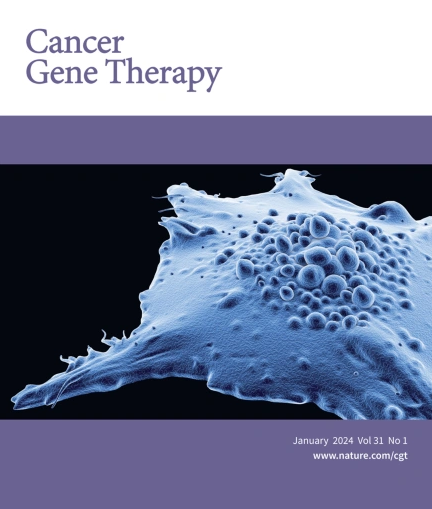CAR-T治疗实体肿瘤的障碍和解决方案。
IF 5
3区 医学
Q1 BIOTECHNOLOGY & APPLIED MICROBIOLOGY
引用次数: 0
摘要
嵌合抗原受体(CAR)-T细胞疗法已成为癌症治疗的一种变革性方法,特别是在血液系统恶性肿瘤中。然而,针对实体肿瘤开发有效CAR-T疗法的障碍,包括抗原逃逸、肿瘤免疫抑制微环境、严重的毒性和临床前模型的局限性,阻碍了其可扩展性和更广泛的临床应用。为了克服这些障碍,近年来开发了一些策略,如优化CAR设计,增强CAR- t细胞浸润,中和免疫抑制细胞,重塑CAR- t细胞代谢,消除抗原逃逸,减轻毒性,推进临床前模型,以及原位编程CAR- t细胞。在这里,我们讨论了CAR-T细胞治疗实体瘤的当前障碍和潜在策略。最后,我们提出了对CAR-T细胞治疗的更广泛临床应用的这些先进策略的观点。本文章由计算机程序翻译,如有差异,请以英文原文为准。

Barriers and solutions for CAR-T therapy in solid tumors
Chimeric antigen receptor (CAR)-T cell therapy has emerged as a transformative approach for cancer treatment, particularly in hematologic malignancies. However, barriers in the development of effective CAR-T therapies for solid tumors, including antigenic escape, tumor immunosuppressive microenvironments, severe toxicities, and limitations in preclinical models, hinder its scalability and broader clinical implementation. To overcome these barriers, strategies have been developed in recent years, such as optimizing CAR designs, enhancing CAR-T cell infiltration, neutralizing immunosuppressive cells, remodeling metabolism of CAR-T cells, eliminating antigen escape, mitigating toxicities, advancing preclinical models, and in situ programming CAR-T cells. Here, we discuss current barriers and potential strategies for CAR-T cell therapy in solid tumors. Ultimately, we present perspectives on these advanced strategies for broader clinical adoption of CAR-T cell therapy.
求助全文
通过发布文献求助,成功后即可免费获取论文全文。
去求助
来源期刊

Cancer gene therapy
医学-生物工程与应用微生物
CiteScore
10.20
自引率
0.00%
发文量
150
审稿时长
4-8 weeks
期刊介绍:
Cancer Gene Therapy is the essential gene and cellular therapy resource for cancer researchers and clinicians, keeping readers up to date with the latest developments in gene and cellular therapies for cancer. The journal publishes original laboratory and clinical research papers, case reports and review articles. Publication topics include RNAi approaches, drug resistance, hematopoietic progenitor cell gene transfer, cancer stem cells, cellular therapies, homologous recombination, ribozyme technology, antisense technology, tumor immunotherapy and tumor suppressors, translational research, cancer therapy, gene delivery systems (viral and non-viral), anti-gene therapy (antisense, siRNA & ribozymes), apoptosis; mechanisms and therapies, vaccine development, immunology and immunotherapy, DNA synthesis and repair.
Cancer Gene Therapy publishes the results of laboratory investigations, preclinical studies, and clinical trials in the field of gene transfer/gene therapy and cellular therapies as applied to cancer research. Types of articles published include original research articles; case reports; brief communications; review articles in the main fields of drug resistance/sensitivity, gene therapy, cellular therapy, tumor suppressor and anti-oncogene therapy, cytokine/tumor immunotherapy, etc.; industry perspectives; and letters to the editor.
 求助内容:
求助内容: 应助结果提醒方式:
应助结果提醒方式:


